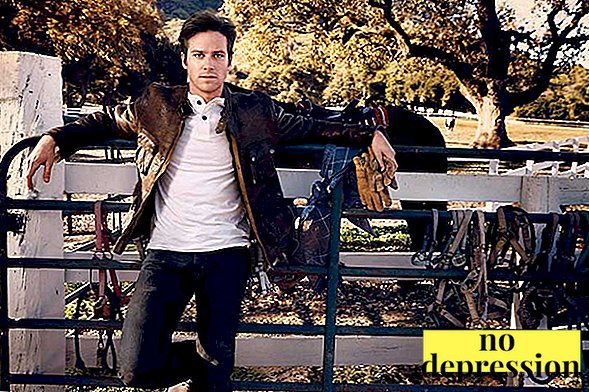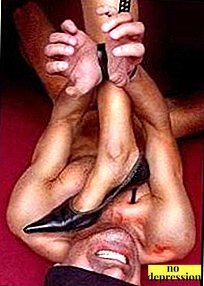Our every day includes dozens of unconscious actions. We notice something beautiful and take out the phone to take a photo. We look at the clock, but do not remember what time it is. We blink, breathe in a dream, pull a hand from a hot kettle. The reason why we do such actions is reflexes. Sometimes they help to survive, sometimes they literally pull back, making it difficult to succeed. What is the difference between reflexes and reflection? How with ten simple life-changing habits? And why micro solutions are more effective than global goals? The answer is in the text.
What is a reflex
A reflex is an unconscious or uncontrolled consciousness of a living organism to stimuli, which takes place with the participation of the central nervous system. This is a reaction of the device, aimed at recreating the balance. Reflex responses take place in a single pattern: repeated exposure of the stimulus to one point of the body or nervous system is accompanied by a similar reaction.
There are many types of reflexes, but all divided into 2 main groups:
Unconditioned reflexes - physiological congenital reactions inherent in genes. They manifest themselves at the level of instincts, without control from the side of consciousness and without any efforts on our part. We swallow saliva at the sight of our favorite dish, turn around to the sound of a fallen chair, crawl in the cold, close our eyes from the bright light.
Conditioned reflexes - Adaptation reactions to environmental changes that are acquired by a person throughout life. For the emergence of such reflexes need certain conditions, so they are called conditional. We learn to talk, read, ride skates or bicycles, drive a car, swim. Conditioned reflexes help us remember skills even after a long break.
Pure unconditioned reflexes are an involuntary movement of the leg when it hits the knee tendon. The so-called knee or stretch reflex helps us to maintain our position in space, therefore it is considered a sign of health. Complex conditioned reactions of the organism are also called acquired behavior. These are our habits and stereotypes, formed as a result of training, education, self-education, under the influence of experience, environment, or vivid, memorable events.
The history of the study of reflexes
The term itself introduced the French philosopher, mathematician Rene Descartes in the seventeenth century. Before the discovery of the reflexes, it was believed that living beings are endowed with a soul that controls all actions. The idea of Descartes at that time was revolutionary. He decided to eliminate the soul from the process of controlling the reactions of the organism and proved that the body structure is fully capable of coping with self-government.
Russian professor, one of the founders of psychology Ivan Mikhailovich Sechenov proved that any conscious or unconscious reactions of the body are controlled by reflexes. Even the phenomena of brain activity that we describe with the words “sadness”, “delight”, “mockery” are nothing but the result of muscle contraction.
Russian physiologist, Nobel laureate Ivan Petrovich Pavlov first introduced the concept of "conditioned reflex". Pavlov conducted most of his research on dogs and proved that four components are needed to form a reflex:
- The presence of motivation - develop the habit of drinking water before breakfast.
- Stimulus (Signal) - awakening.
- His repeated repetition - daily reminder on the phone.
- Reinforcement of unconditional or satisfying vital need - wellbeing.
Today, knowledge about the brain is changing at dizzying speed. Technologies like MRI have allowed new discoveries to be made about him. It turns out that the brain changes not only in childhood, but throughout life. Every time we acquire a new habit or learn a skill, we change our brain. Researcher at the University of British Columbia Lara Boyd called this property "brain neuroplasticity". Neuroplasticity of the brain is preserved at any age, which means that we can change our habits at any time.
Reflex and reflection - what's the difference?
Reflex and reflexion are one-root words derived from Latin. reflectio (display). In turn the word reflectio consists of two parts: the basics flectio - curvature, turning with prefix re - the opposite action. That is, the word literally translates as "reverse direction". But general word formation does not give the main answer: these concepts are similar or different.
Both terms are used in philosophy, physiology, psychology and mean the reaction of a living organism. But this is where the similarities end, the differences begin. Understand the differences will help a small analysis in the table:
| Reflex | Reflection |
|---|---|
| This is any body reaction to irritation. | This is a sensible reflection as a special case of a general reaction. |
| The object of action is any organ or system of the body (physiological or psychological) | The object of action is self-knowledge or self-awareness as a phenomenon of the human psyche. |
| This is an involuntary reaction. | This is a conscious reflection, self-analysis. |
| Characteristic of any creature endowed with a nervous system. | Is characteristic of man |
The differences between reflexes and reflection are described by Rene Descartes in his book The Passion of the Soul. In the author's psychological teaching, not only the body was freed from the soul (psyche), but the soul also became free from the physical shell. The body can move, the soul can meditate. The reflex controls the body. Soul is governed by reflection.
What reflexes prevent us from living
Our brain is looking for ways to simplify life, so it creates habits that do not require a lot of energy. But not all of them help us in life to become happier. On the contrary, some pull us back, literally making it difficult to succeed.
The famous experience of I. P. Pavlov was simple: a light bulb turns on - food is brought in - a dog saliva is released. After fixing the reaction, the plate was taken away, but after turning on the light bulb, the saliva was still produced. So we: habitually react to everything around, without thinking about the reasons:
- In childhood, we were offended by a red-haired boy - all red people we consider aggressive.
- A teacher with a high hairdo put us two - from women with high hair, we are waiting for injustice.
- A lanky classmate named Andrew constantly teased - we prefer to avoid all the high Andreevs.
We initially communicate with such people with hostility, because we are not aware of our reactions. Even carefully hidden vigilance is read at a subconscious level. We see enemies in such people, we notice only negative sides, we attack - they defend themselves. So the only reason why others seem angry and aggressive to us is ourselves.
What to do?
- Step one: understand that your offenders and new acquaintances are different people.
- Step two: track your reactions, then take responsibility for their manifestation.
This simple technique will bring double benefit. First, it will relieve the offenses that take a lot of internal energy. Secondly, it helps to discover a lot of opportunities for communication, which we avoided.
Reflexes or habits: how to train the brain to change
Structural changes in the brain form a long-term memory, where our habits "live". But the deep changes do not pass in one day, it takes time. The most common statement is that the habit is developed in 21 days. But all individually. It all depends on the genes, past experience, brain training.
Our brains and muscles have a lot in common: they are amenable to trainingThey are tired, they work better from some products, they are lazy from others. And yet - they atrophy without new exercises (physical or mental), they require a whole complex of exercises for "pumping".
It would seem, take and train. But not everything is so simple. Probably, each person has his own closet of abandoned right habits - the intention to learn English, to save, to go to bed, to eat right and to do things right away, gathering dust right away, is gathering dust. Everywhere there is one difficulty: I want to move the changes, but the force of friction inhibits any innovations.
There are several ways to cancel the force of friction. You can choose the one that suits you.
Technique 1. Simple actions
The secret of the brain is that as soon as he learns to do something easy, he will repeat and more complex. Here are 10 good habits that will not require titanic efforts, but will change the quality of life:
- Drink a glass of water immediately after waking up and drink enough water throughout the day.
- Give up the smartphone, TV, 30 minutes before bedtime.
- Wipe face with an ice cube after evening washing.
- Fall asleep no later than 11 pm, get up 30 minutes earlier.
- Daily read 30 pages from the book.
- In the evening, remember all the good things that happened during the day.
- Do good deeds daily.
- Save 10% of your income.
- Maintain home accounting.
- Slow down for 5 minutes and dream.
Technique 2. The two-phase method of forming habits
The method consists of two steps: loading and fixing.
The first The boot step is not easy, because you will have to adhere to a new habit with fanatical accuracy. But this stage does not last long. When he passes, you can relax. For example, you decided to care for 10 thousand steps a day. It is impossible to make exceptions neither in the snow, nor after a hard day, nor on a holiday. At this stage it is important to train the brain to walk.
Second step - supporting - lasts longer, but allows you to be more flexible. For example, you can relax on Sunday, and take the steps to take another day. Or replace walking a little jogging, skiing.
To fasten habits you can add triggers: for example, buy a beautiful suit in which you really like yourself. When the first enthusiasm subsides, the trigger will work. Tell yourself: I will not go for a walk, just try on my beautiful tracksuit. Wear a suit and go for a walk without any problems. Well, do not disappear as such beauty.
Technique 3. Micro-solutions instead of a global goal
When we set ourselves global, long-term goals, the brain becomes frightened and turns on resistance at full power. The lack of a real result in perspective causes one desire: to cry and give up. But if you take small steps and each time receive a reward, the chances of success are much more real. This is what the micro-solution technique is built on - every solution should lead to a visible result. If it is not there, you need to change tactics, invent new ways, bring the task to the end, until it is done.
How it works. For example, you decided to train yourself in a month to drink 2 liters of water a day. Without the habit of pouring yourself a glass of water at a time is difficult. Even harder is to watch how much water is drunk. Which micro solutions can break the habit for implementation?
Step 1. During the first week, drink a glass of water immediately after waking up. To do this, you can put in the evening a reminder and leave water on the bedside table. Urom just stretch out your hand and drink water.
Step 2. Control the amount drunk at work. Count the number of glasses per day is difficult. The best way out is to pick up a 1.5 liter bottle of water and keep it on your desk. Drink everything during the day.
Step 3. Keep a bottle of water in a visible place in the car. On the road, I don’t feel like drinking a lot, but a couple of sips can cheer up and supplement the daily plan.
Do not try to change everything in one day. The body and the brain just will not stand and turn on the internal brakes. But each small result is capable of inspiring, energizing, directing to the next success.
findings
- Reflexes - our internal virtual instruction on survival, which is formed throughout life.
- Habits, rituals, anchors, hooks of consciousness - all these are different names of reflexes.
- The brain changes not only in children, it remains plastic throughout life.



